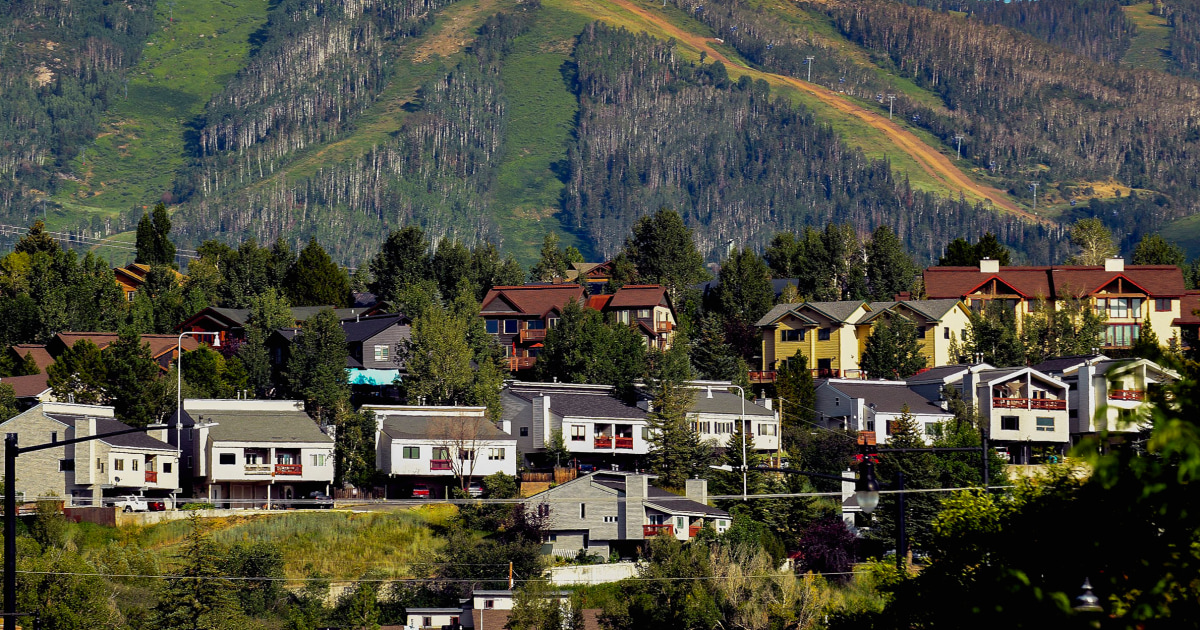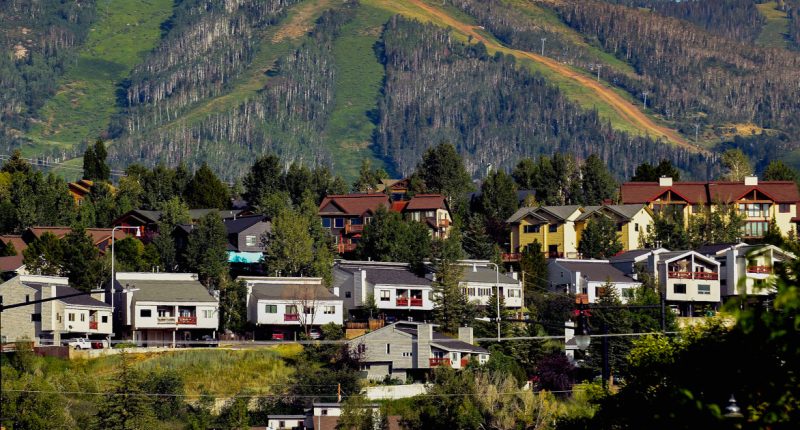
“In this environment where there’s always going to be significant amounts of demand, we have to deal with it on the supply side, and our supply side just has not kept up year over year over year over year,” said Jason Peasley, director of the Yampa Valley Housing Authority, which would oversee the development.
The project, called Brown Ranch, has been met with opposition from a group of local residents who have raised concerns about its financing and the impact on traffic and local infrastructure, along with what it could mean for the character of the community.
During a city council meeting in October that stretched into the early-morning hours, dozens of residents spoke for and against the project, with supporters pleading for affordable housing and opponents urging the city to scale back the plans or take more time to study the impact. In the end, a divided city council voted to approve the Brown Ranch plan. But opponents collected more than 1,000 signatures to get the development placed on the ballot on March 26, leaving the final decision up to voters.
Jim Engelken, who has lived in Steamboat since 1979 and previously served on the city council, has been helping organize the opposition. Engelken said he sees a need for more affordable housing but would like to see the development downsized or grow at a slower pace.
“Yes, we need affordable housing, no question,” Engelken said. “It needs to be smaller to start with, it needs to have some ability to generate its own way, its own money.”
He said he is concerned that the city won’t have enough funds for the planned infrastructure, like parks and public transit, and that the projected 6,000 people who will ultimately live at the development — the majority of whom are expected to move there from out of town — will add to traffic congestion and create a need for more water infrastructure.
“It’s an overreach, it’s too big, it’s too much, it’s too expensive, it causes too many problems for the existing city,” said Engelken. “We’re concerned that the infrastructure won’t be in place in this new, large, separate portion of our city, and it will create a second-class neighborhood. That the people living there will be treated like second-class citizens who don’t have access to public transportation or city parks, and we don’t know how many of them are coming from outside.”
With a population of around 13,000, Steamboat has prided itself on its small-town, Western feel. While housing has always been a struggle for entry-level and hourly workers, Steamboat had been viewed as relatively affordable for middle-income professionals compared to other mountain towns, like Vail, Colorado, or Jackson, Wyoming.
“Steamboat has always been known as a cowboy ski town. It’s real authentic,” said Steamboat City Manager Gary Suiter. “And the real estate prices had not gotten crazy like everywhere else. Well, that ended with the pandemic.”
Since 2020, single-family home prices have increased about 80% to $1.8 million on average, and all real estate sales, including condos, increased 64% to $1.1 million, according to data compiled by Jon Wade, a local realtor. For existing homeowners, those rising sale prices have caused property taxes to shoot up, with the average tax assessment up 86%, Wade said.
That’s put homeownership largely out of reach for most people making less than $200,000 a year. And even for those who can afford a home at that price, the competition for housing is so fierce given the low inventory that those without all-cash offers are often losing out, said local realtors.
“We are seeing across all segments of the market even high-paid professionals, they’re turning down jobs because they spend a little time looking at housing costs and they can’t do it,” said Christy Belton, who has been selling real estate in Steamboat for 20 years and whose family has been in the community for five generations. “The people who are coming here are paying a million dollars for an entry-level house — a totally entry-level, 50-year-old house.”
Steamboat isn’t alone in its struggles. As demand shot up during the pandemic, so did prices in more high-profile destination towns like Aspen, Colorado, and Park City, Utah. With even wealthy homebuyers priced out of those markets, they began looking to more off-the-beaten-path locations.
In Driggs, Idaho, which used to be an affordable-housing refuge for workers in more pricey Jackson Hole, average home prices have also gone up around 80% to $735,000 since the start of the pandemic, according to data from Zillow. Woodstock, New York, has seen prices increase 78% to more than $600,000 on average amid an influx of buyers from New York City. In Gatlinburg, Tennessee, a popular resort community in the Great Smoky Mountains but not one known as a hot housing market, home values have risen more than 80% to an average of $480,000.
Source: | This article originally belongs to Nbcnews.com









